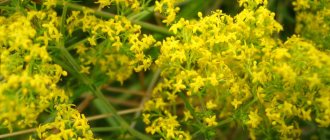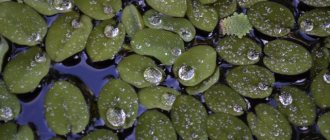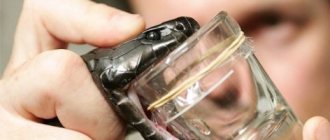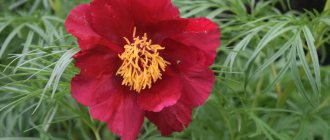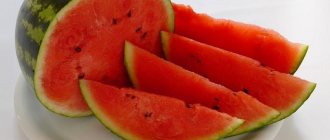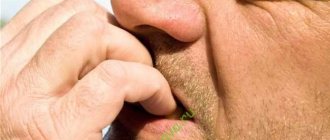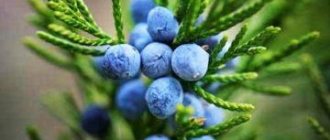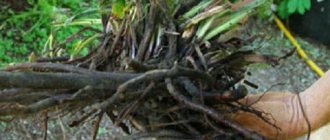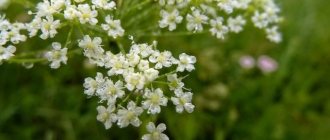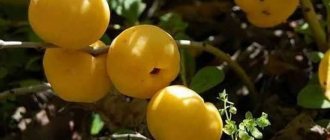Description of Linnaea
Linnea is a small shrub with creeping thread-like shoots, the thickness of which reaches 1 mm, and the length varies from half a meter to two. The leaves are attached to the stem with the help of short petioles, the length of which is 2-5 mm; they have a round or ovate-rounded shape. Pink flowers, two on an erect flowering shoot reaching a height of 5-15 cm, appear in the first two summer months, and fruits in the form of round nuts up to 3 mm in diameter and covered with spiny hairs ripen in late summer - early autumn. With the help of these hairs and sticky bracts, the fruits are attached to the fur of animals and the feathers of birds, which helps the plant spread.
The chemical composition of linnea has not been fully studied, but it is reliably known that the plant contains:
- tannins;
- coumarins;
- alkaloids.
It is these components that provide the beneficial properties of the plant. The stems, leaves and flowers are used for medicinal purposes.
Northern Linnea: an amazing medicinal plant
Northern Linnaea is a wild plant. It grows in cool, humid regions. You can grow linnea yourself to obtain a valuable medicinal plant.
Content
Description and distribution of northern linnaea
Northern Linnea is a shrubby plant. It grows in large quantities in the alpine belt, spruce mossy forests and tundra, and is more common in North America, Asia and Europe. You can also find linnaea in Russia, for example, in the north of the European part, in Siberia, in the Far East and North Caucasus, on Sakhalin, and the Kuril Islands.
Linnea northern has several other names:
- Abdomen.
- Ghost grass.
- Crazy grass.
- Golden grass.
- Forest nuthatch.
- Hairy (pilose).
Linnea has a creeping stem, the shrub itself is low. The structure of the leaves is petiolate, they are round in shape. There are 2 flowers on each fluffy, erect, long stem.
The plant begins to bloom in early summer, and later, in July-August, bears fruit. Animals and birds help the plant reproduce.
With the help of sticky bracts and small hooks, the fruits are attached to the fur and feathers and thus spread.
There are 3 more subspecies that were previously considered separate species:
- American.
- Northern.
- Long-flowered.
Northern Linnaea received its interesting name in honor of the scientist, biologist and legendary physician Carl Linnaeus. This was his favorite plant; even the coat of arms and most portraits of the botanist depict linnaea flowers.
It is also known that northern linnaea is the official plant of Småland, the Swedish province where Carl Linnaeus himself grew up.
Cultivation of Linnaea
It is successfully cultivated in the Alpine mountains and rocky villages. Only the leaves of the plant are of particular value. Despite the beautiful, delicate flowers, they have only decorative value.
In May, small bell-shaped flowers with a pinkish tint appear. By the beginning of summer, they form openwork carpets on the ground near spruce forests. Flowering can last up to several weeks, the place resembles a pink cloud. But nevertheless, linnea is not used to decorate the garden in country houses.
It is unlikely that it will be possible to grow northern linnaea on ordinary garden soil, even in suitable weather conditions. In order for the plant to grow properly, you need to find moist, acidic, humus-rich soil. When talking about wet soil, we are not talking about constant stagnation of water, as this can interfere with growth and development.
Advice!
The plant does not like the sun, so it should be planted in partial shade under the canopy of dense trees. The soil layer can be thin, so it will grow even on stones densely covered with moss.
To artificially propagate northern linnaea you will need roots or cuttings. In those places where the shoots come into contact with the ground, roots are formed, and it is these that will need to be separated from part of the lash. A linnea rug can grow up to 60 cm in diameter in one season.
You can try growing linnea from seeds. The advantage is that they are easier to obtain and you can immediately sow a larger area. If you cannot find seeds for sale, you can collect them yourself on the surface of the soil in places where linnaea blooms. Seeds cannot be stored for a long time, so they must be planted immediately.
Medicinal properties of the plant
As mentioned above, Northern Linnaea is a medicinal plant.
Its leaves are used for:
- Diuretic problems;
- Constant pain.
- Swelling of the arms and legs.
- Fever and other cold symptoms.
- Impotence.
- In addition, linnea is considered a “blood purifier”; its infusion helps to thin thick mucus and relieve pain.
- Linnea is also used externally, making poultices from it and applying it to sore spots. It is often used for lumbar and joint pain.
- Previously, in some regions of Russia, where the climate was appropriate, a decoction of northern Linnaea was drunk as regular tea. Now it is also used for treatment, but only in folk medicine, due to insufficient study of its properties.
It is very important to collect leaves while the plant is flowering. Then they need to be dried and wrapped in paper.
The simplest recipe from linnea is as follows: pour a tablespoon of crushed leaves into a glass of boiling water and pour it into a thermos to infuse. You can use the decoction the very next day, drinking a quarter glass 4 times a day before meals. The course of treatment lasts a month, then you should take a break for 10 days and you can repeat the treatment again.
Source: https://MegaOgorod.com/atricle/1560-linneya-severnaya-udivitelnoe-lechebnoe-rastenie
Use in folk medicine
The medicinal and beneficial properties of the plant are used in traditional medicine recipes:
- To get rid of papillomas and age spots, a vodka tincture is prepared. Fill a liter jar halfway with crushed linnea herb and fill it with vodka to the very top. Infuse in a dark place for 10 days, shaking the infusion periodically. Take a teaspoon of tincture three times a day before meals, after diluting it in 30-50 ml of water. Take the tincture until the problem is completely eliminated, and if this portion is not enough, then prepare a new one, taking a ten-day break between courses of administration. Additionally, you can wipe problem areas with diluted tincture.
- For uterine fibroids, use a decoction: pour two tablespoons of dried raw materials with a glass of boiling water and simmer the mixture over low heat for a quarter of an hour, then leave for another 45 minutes. Divide the resulting decoction into three doses and drink before eating.
- When the uterus prolapses or prolapses, prepare the following infusion: pour two tablespoons of the herb with boiling water (1 glass) and leave the mixture for 30 minutes in a water bath, then infuse it for at least an hour. Take the strained infusion in small portions throughout the day.
- For salt deposition, gout, rheumatism, polyarthritis, lower back pain, and cramps, use the infusion. To prepare it, use a tablespoon of crushed dry plant and pour a cup of boiling water over it. Infuse the product for 2 hours, then filter. Take the finished infusion 15 minutes before meals, 2 tablespoons three times a day. For these ailments, the plant is also used externally in the form of a poultice. To prepare them, take 3 tablespoons of dried herbs and boil it with boiling water. Wrap in gauze and apply to sore joints. For rheumatism, taking a hot decoction of linden orally, as well as hot poultices of flowers applied externally, will help.
- To combat stomach disease, urinary retention and rashes of various origins, a decoction is prepared. To do this, take 10 grams of dried raw material and fill it with a liter of water, boil over low heat for a couple of minutes and leave for 3-4 hours. Drink the strained broth like tea three times a day.
- For stomach ulcers, use this recipe: take 15 stems of the plant along with leaves and flowers and fill them with vodka using 0.5 liters. Infuse the product for 4 days, then filter and take 1 tablespoon three times a day before meals.
- For colds, high fever, aching joints, migraines and bronchitis, use an infusion of herbs prepared in this way: pour two tablespoons of the raw material with a glass of boiling water and leave for 4 hours, preferably in a thermos. Drink the strained infusion throughout the day in six doses. Lemon grass will also help relieve high fever.
- To improve your tone, strengthen your immune system and prevent colds, brew the abdomen to your taste, like regular tea, and drink 2-3 cups of this drink a day. It has been noticed that with regular consumption of tea, a clear rejuvenation of the body occurs: the skin of the face is cleansed, wrinkles are smoothed out. Regular consumption of lemongrass tea also increases the body's resistance to colds.
- For allergic or other skin rashes, use the herb instead of a washcloth when taking a shower or bath.
- For cancer patients, the following recipe is recommended: take a small bunch of grass and fill it with hot water (400 ml). Boil the mixture for three minutes and leave to brew for 3 hours. Strain the infusion and drink instead of tea in any quantity, regardless of meals.
- For breast cancer, an additional means to alleviate the condition are compresses prepared as follows: mix 2 teaspoons of dry raw materials with 2 tablespoons of sour cream and beat the mixture well. Then place the resulting mass on canvas and cover your chest with it, cover it with parchment on top and tie everything with a scarf. Do this procedure several times a day.
Important! In case of cancer, linnea herb gives good results with long-term use.
Medicinal properties of potted weed
Podkodolny weed contains tannins, alkaloids, coumarins, which provide the medicinal properties of the plant. It has an analgesic, antipyretic, diuretic, and expectorant effect. Helps with female infertility, male impotence, joint diseases. Cleanses the blood well.
Podkodolny grass is also taken for lower back pain, diarrhea, urinary retention, and salt deposits. Give to small children when they are scared. Take baths with it for skin rashes and allergic rashes, using the herb instead of a washcloth.
You can brew tea with grass and drink it as a general tonic. It will help improve the tone and immunity of the body. Especially useful during colds.
With regular use, there will be obvious manifestations of rejuvenation of the body, facial skin will cleanse, wrinkles will smooth out.
Underwater grass for cancer
Podkodolny grass helps a lot with cancer, but in this case you need to drink it a lot and for a long time. Therefore, for such patients, large quantities of linnea have to be prepared for the winter. In case of breast cancer (subject to treatment in combination with other means), the patient’s condition can be alleviated with the help of the following treatment:
- take two teaspoons of dry grass,
- mix with two tablespoons of fresh sour cream,
- beat thoroughly.
A compress is made from this mixture on the chest. The procedure is repeated several times.
Contraindications
Linnea has a vasoconstrictor effect, so it should be taken with caution by hypertensive people and people prone to high blood pressure.
Contraindications to the use of the plant are pregnancy and breastfeeding. Childhood is not a contraindication to the use of the plant for medicinal purposes: decoctions are used for baths, which prevent the development of rickets in children.
Herbs
Herbs are a group of plants whose leaves, stems, rhizomes, fruits and seeds serve as raw materials for the production of medicinal products. As of 2010, the International Union for Conservation of Nature recorded 21,000 species of value to human health. Classification of medicinal herbs by properties: 1. Emollient (arrowroot, flax, licorice, Icelandic moss, tallow root). 2. Pectoral or pectoral (hairy plant, butterbur, elecampane, mint, spruce shoots). 3. Stupefying or narcotic (poppy, horse dill, aconite, foxglove). 4. Antispasmodic (melissa, linden, cherry laurel, peony, valerian). 5. Emetics (ipecac). 6. Laxatives (rhubarb, chicory, bindweed, colchicum). 7. Stimulants (garlic, anise, star anise, cinnamon, rosemary, sage, chamomile, horseradish, cumin, cloves, vanilla). 8. Astringents (bird cherry, blueberry, quince, rosehip, cornflower). 9. Tonic (cocoa, hops, thistle, gentian root, holly). 10. Diaphoretics (burdock, elderberry, elm, serpentine). 11. Diuretics (licorice, parsley, dandelion, primrose). 12. Refreshing, debilitating, anti-inflammatory (sorrel, licorice, stickweed). 13. Anthelmintics (tansy, onion, fern, lapushnik). 14. Antiscrofulous (hazel, cinchona, watercress). The healing power of plants has been known since the 21st century. From ancient times to this day, they are widely used in folk, traditional medicine for the prevention and treatment of diseases of the digestive tract, genital organs, heart, nervous, endocrine systems, and elimination of infections. Properties: – relieve pain; – relieve irritation, inflammation, spasms; – normalize stool (laxative effect); – give strength and energy (stimulate the central nervous system); – compress the tissues of our body (knit); – strengthen the immune system; – increase performance; – regulate blood pressure (thin the blood); – improve sleep (calm the nervous system); – alleviate the symptoms of menopause (in women). Based on medicinal herbs, infusions, decoctions, syrups, tablet and capsule preparations, powders, and lotions are prepared. They have a much gentler effect on the human body than synthetic medications. In addition, herbs (basil, garlic, dill, mint) are used in cooking to improve the taste of dishes and in religious rituals. Remember, all plants are strong allergens, so they should be used with caution so as not to cause harm to health.
Preparation and storage of plants
Medicinal raw materials (stems, leaves and flowers) are collected during the flowering of the plant . Before drying, the grass is sorted, removing blackened and yellow leaves. Shady, well-ventilated places (sheds, attics) are suitable for drying, where the raw materials are laid out in a thin layer. Finished raw materials are stored for no more than two years in paper bags or cardboard boxes.
I told you about the benefits and harms of linnea and its use for medicinal purposes. Have you ever used this plant in your treatment? Share your experience and recipes with us.
